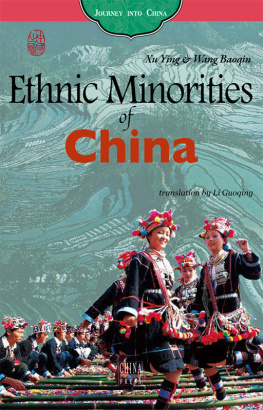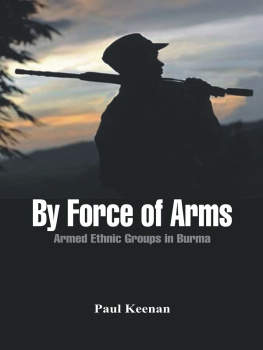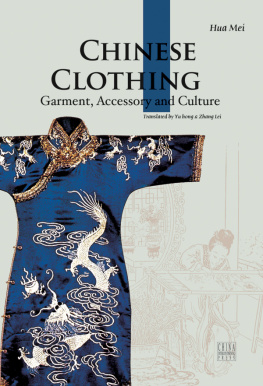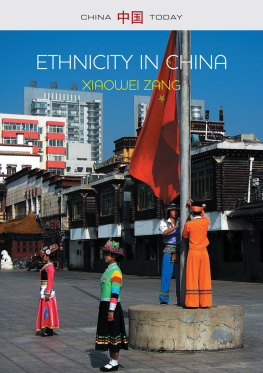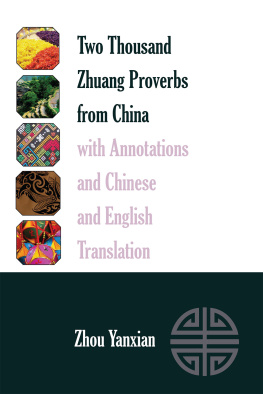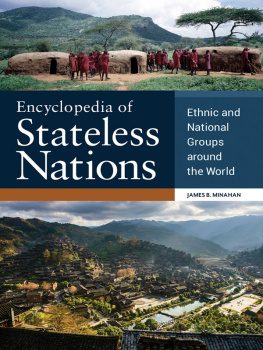2020 Xiebing Cauthen. All rights reserved.
No part of this book may be reproduced, stored in a retrieval system, or transmitted
by any means without the written permission of the author.
AuthorHouse
1663 Liberty Drive
Bloomington, IN 47403
www.authorhouse.com
Phone: (833) 262-8899
Because of the dynamic nature of the Internet, any web addresses or links contained in
this book may have changed since publication and may no longer be valid. The views
expressed in this work are solely those of the author and do not necessarily reflect the views
of the publisher, and the publisher hereby disclaims any responsibility for them.
Any people depicted in stock imagery provided by Getty Images are models,
and such images are being used for illustrative purposes only.
Certain stock imagery Getty Images.
ISBN: 978-1-6655-0064-7 (sc)
ISBN: 978-1-6655-0065-4 (hc)
ISBN: 978-1-6655-0063-0 (e)
Library of Congress Control Number: 2020918110
Published by AuthorHouse 07/20/2021
The Colorful Ethnic
Groups of China
Xiebing
(Chinas Exotic Costume Culture in
Table of Contents
1: Han
2: Hezhen
3: Korean
4: Xibe
5: Manchu
6: Oroqen
7: She
8: Gaoshan
9: Li
10: Yao
11: Jing
12: Hani
13: Dai
14: Blang
15: Jino
16: Deang
17: Nu
18: Va
19: Drung
20: Pumi
21: Lahu
22: Moinba
23: Jingpo
24: Lisu
25: Zhuang
26: Mulam
27: Bai
28: Maonan
29: Shui
30: Gelo
31: Naxi
32: Miao
33: Dong
34: Bouyei
35: Yi
36: Achang
37: Lhoba
38: Tibetan
39: Tujia
40: Bonan
41: Qiang
42: Tajik
43: Hui
44: Dongxiang
45: Yugur
46: Russian
47: Mongolian
48: Tu
49: Salar
50: Uygur
51: Kirgiz
52: Ozbek
53: Kazak
54: Tatar
55: Daur
56: Ewenki
Introduction
I grew up in China during a period of great upheaval. My mother, like any mother, tried hard to protect me and nurture me. Safety first was a principle that she persistently adhered to. She insisted that I come home immediately after school every day, and I tried hard to follow this instruction. Spending so much time at home (reminiscent of todays pandemic social isolation) instilled in me a great love of reading and Ive been reading and writing every since.
As I grew older my curiosity, as well as opportunity and love of reading, caused me to make reading an even bigger part of my life. I read books on history, love, romance and philosophy, as well as on the joys and sorrows of mankind during many different ages and in many different cultures. My reading has given me an optimistic attitude about life which has helped me to work with others and teach what Ive learned to my young trainees. Friends sometimes tell me that my positive attitude makes them happy. I feel lucky that what Ive learned from reading brings them such pleasure.
Reading still captivates my interest, comforts me and gives me a sense of calm well being. Reading helps me to understand the deeper distinctions between the emotions, between fact and fantasy, and between good and evil. Reading gives me both happiness and sorrow but, most of all, it makes me think. Reading good books opens up a wider sense of reality and deepens understanding. It enlightens us and causes us to ask questions, and to read between the lines. It broadens our minds and makes us more tolerant of the feelings and ideas of others, and more able to accept new ideas. It trains us to deal more effectively with adversity. The more we read good books, the more we learn about life and each other.
Students often ask me: What constitutes a good book? I tell them that a good book is one that gets you thinking. It opens your eyes to things youve never thought of before. It gives you more understanding of yourself and others, and even teaches you a few things about how to be a better person. The important thing I tell them is to get started....do some reading every day.
Reading has enabled me to listen to and begin to understand the fascinating histories and cultural differences that have formed the various ethnic groups of China, which is what inspired me to write this book.
For the last few years I have been busy displaying the wonderful Chinese Ethnic Costumes, that my long time friend Ha Dan donated to the Dasen American Academy, at various Bay Area libraries, museums, and at San Francisco State University. As was doing this I gradually got more and more interested in not only the costumes but also the ethnic groups that created them, in some cases thousands of years ago. In many instances these colorful costumes are still worn at ceremonial gatherings and other special occasions. Part of my interest came from my long held belief that all cultures had great things to offer, if only we could put our differences aside and work toward the common good. So two years ago I decided to put together a pictorial compendium of the ethnic groups, featuring their wonderful costumes.
Editors Ms. Cauthens love of the great books and great minds of history has caused her to write this remarkable book, about the ancient ethnic minorities of China. In it she succinctly sets forth the beauty and variety of the various ethnicities for all to see. Asked about her reason for writing the book Ms. Cauthen said: It is my hope that illustrating the diverse ethnic cultures of China will help people to see the richness and value of all groups and therefore help individuals, groups and countries to get along better with one another.
Acknowledgments
Many thanks to all those who have given me so much help and encouragement while I was writing this book. I am very grateful for your assistance. First I want to thank my mother Peiwen who is always, always, always in my corner. Ha Dan, President and Chief Clothing Designer of the Yichenwuyue Company of Beijing, China, by generously donating her marvelous ethnic costumes to my Dasen American Academy, which now includes a multicultural costume museum, got me interested in the Chinese Ethnic Groups and their distinctive attire. Teng Jue, a uniquely talented photographer who is also the Chief Graphics Editor of World Culture, provided fascinating photographs of each of the various groups engaged in their regular activities. Liu Xiao Feng, a professional photographer, provided the excellent photographs of the ethnic costumes. Chinese artist Ha Hui quietly gave me wonderful support, as did Liang Li: Chief Editor of World Culture, an expert on ethnic cultures, Jonathan Fall and Liu Tie Hua, my loyal and dedicated Chinese/English translators, Gerald Cauthen, who helped greatly with the editing and Liu Jin, the Cover Designer.


